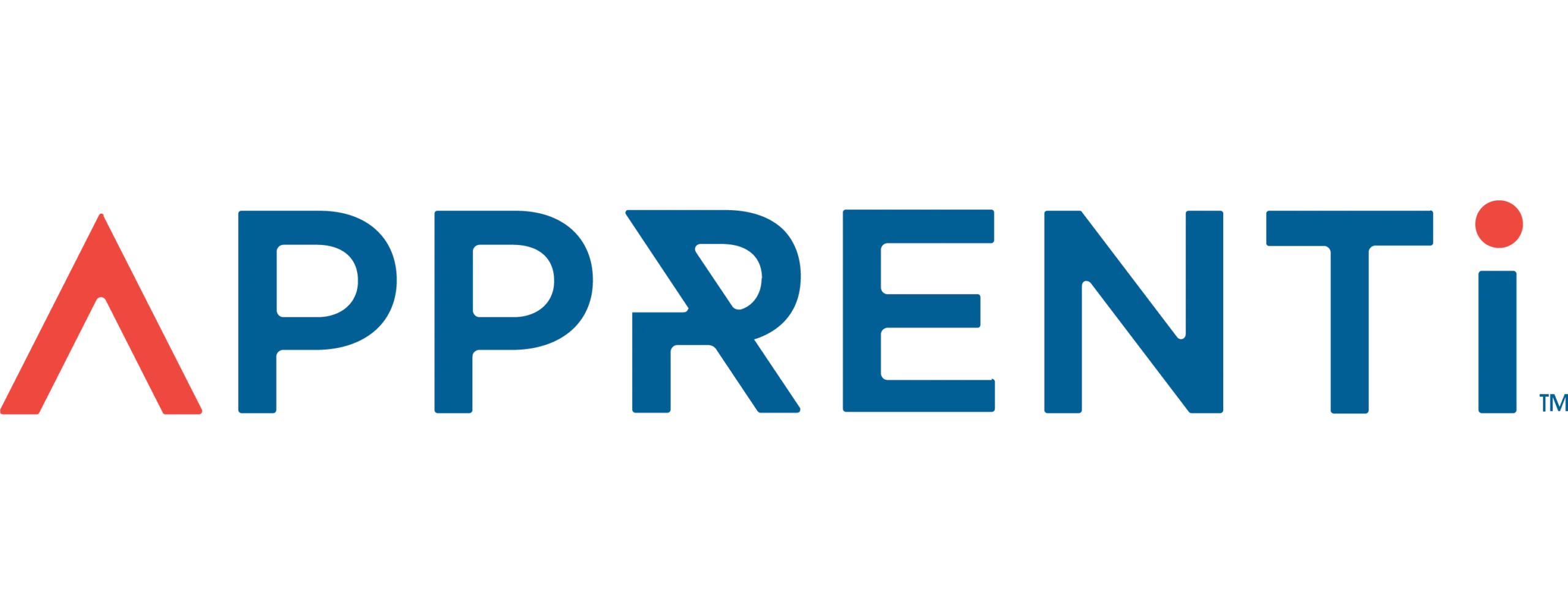Article Summary
- Prepare your college for significant funding by understanding the upcoming Supporting Apprenticeship Colleges Act of 2025 and its potential for grants up to $500K.
- Evaluate your institution’s eligibility by reviewing program criteria and assessing your readiness to manage new apprenticeship initiatives effectively.
- Develop a robust application strategy that includes crafting a compelling proposal, gathering all necessary documentation, and forging strong partnerships with local employers.
- Maximize the benefits of apprenticeship funding for your students, local employers, and the broader community by designing impactful and sustainable programs.
Want to Learn More About Your Registered Apprenticeship Opportunities?
BOOK A FREE CONSULTATION
Let’s Talk About Federal Apprenticeship Funding
Hey there! If you’re a dean or administrator at a community college, you know how vital funding is to keep our programs innovative and accessible. We’re on the cusp of some exciting developments, particularly with the anticipated Supporting Apprenticeship Colleges Act of 2025. This act is poised to inject significant resources into colleges like yours, potentially offering grants in the ballpark of $500,000 to bolster apprenticeship programs, especially in critical sectors like construction and manufacturing. It’s all about creating more pathways for our students to gain real-world skills and step into well-paying careers, often without the burden of student debt. This is a fantastic opportunity to expand what we can offer and truly make a difference in closing our nation’s talent gap.
Discover available grant opportunities
First things first, let’s talk about what’s out there. Beyond the big buzz around the Supporting Apprenticeship Colleges Act of 2025, there’s a whole ecosystem of federal grants designed to support workforce development and apprenticeships. Think about resources like the Department of Labor’s (DOL) grant programs and funds available through initiatives like the Workforce Innovation and Opportunity Act (WIOA). These aren’t just one-offs; they represent a continued federal commitment to strengthening our skilled workforce. The key is to stay informed and proactive. Many of these opportunities are detailed in resources like “The Federal Resources Playbook for Registered Apprenticeship.”
Calculate potential funding amounts
So, how much are we talking? While the $500,000 figure associated with the upcoming Act is a significant headline, actual funding amounts can vary widely. It often depends on the scope of your proposed program, the number of apprentices you aim to serve, and the specific requirements of the grant. Some grants might cover curriculum development, others instructor training, and some might help with supportive services for apprentices. It’s crucial to read the fine print of each grant opportunity to understand the potential award range and what costs are allowable. This isn’t just about chasing the biggest number; it’s about finding the right fit for your college’s strategic goals.
Review application deadlines
This one’s a biggie: deadlines. Federal grant applications are notorious for their strict timelines. Missing a deadline usually means missing out entirely until the next funding cycle. For the Supporting Apprenticeship Colleges Act of 2025, once it’s enacted and funding opportunities are announced, you’ll want to be ready to move. Keep an eye on official channels like Grants.gov and the Department of Education’s website. It’s a good idea to create a calendar of potential grant opportunities relevant to your college and track their typical application windows. Being prepared well in advance of announced deadlines is often the secret sauce to a successful application.
Understand matching requirements
Many federal grants come with matching requirements. This means your institution might need to contribute a certain percentage of the project costs, either in cash or through in-kind contributions (like staff time or facilities). Understanding these requirements upfront is essential for realistic planning and budgeting. Some grants might require a 25% match, others 50%, or some none at all. This detail will be clearly outlined in the grant solicitation. Factoring this into your financial planning early on will prevent any surprises down the line and demonstrate your institution’s commitment to the initiative.
Pro tip: Establish a dedicated team or point person within your college to monitor federal grant opportunities and coordinate application efforts. This focused approach can significantly increase your chances of securing funding.
Securing these funds can be a game-changer, allowing us to expand high-quality apprenticeship programs that benefit everyone involved. Let’s get your college ready!
Which Colleges Can Apply?
Alright, so we’ve talked about the exciting prospect of new federal funding, especially with the Supporting Apprenticeship Colleges Act of 2025 on the horizon. But the big question is: who gets a slice of this pie? Generally, these opportunities are aimed at institutions of higher education, with a strong emphasis on community and technical colleges that are at the forefront of workforce development and apprenticeship training. The goal is to empower the institutions best positioned to bridge the gap between education and employment, creating those crucial earn-and-learn pathways for students.

Meet eligibility requirements
Eligibility is key. For grants like those anticipated under the Supporting Apprenticeship Colleges Act of 2025, institutions typically need to be accredited public or private non-profit institutions of higher education. Specific requirements might include:
- Demonstrated experience in administering apprenticeship programs or a strong plan to develop them.
- Partnerships with employers who are committed to hiring apprentices.
- Alignment with regional or state workforce development strategies [4]. It’s not just about wanting the funds; it’s about demonstrating that you have the foundation and partnerships in place to utilize them effectively. Your college’s track record in workforce education and its ability to collaborate with industry will be critical.
Review program criteria
The devil is always in the details, right? Each grant will have specific program criteria. For instance, the Supporting Apprenticeship Colleges Act of 2023 (which gives us clues about the 2025 version) specifically targets grants for institutions sponsoring construction and manufacturing-oriented apprenticeships. Other grants might focus on different in-demand sectors like IT, healthcare, or clean energy. You’ll need to carefully review what types of apprenticeship programs are eligible, the target populations (e.g., underrepresented groups, veterans), and the expected outcomes, such as completion rates and job placement.
Assess institutional readiness
Beyond meeting the black-and-white criteria, there’s the question of institutional readiness. This is about looking inward. Does your college have the administrative capacity to manage federal grants, which often come with rigorous reporting requirements? Do you have the faculty and staff expertise to deliver high-quality related technical instruction? Are your student support services prepared to assist apprentices, who often juggle work and study? A large percentage of colleges involved in apprenticeship grants already provide supportive services, recognizing their importance in apprentice recruitment and retention. A thorough self-assessment can highlight strengths to leverage and areas to bolster before applying.
Pro tip: Conduct an internal audit of your current apprenticeship-related activities and resources. This will help you identify gaps and demonstrate your existing commitment in your application.
Understanding these aspects will help you determine if your college is a strong candidate and how to best position your application for success. It’s about ensuring these funds can be maximized to create real opportunities for our students and meet the needs of our local economies.
Here’s How the Act Benefits Everyone
When we talk about initiatives like the Supporting Apprenticeship Colleges Act of 2025, it’s not just about the dollars and cents flowing into our institutions. It’s about the ripple effect – the profound and positive impact these programs have on a whole range of stakeholders. From the individual student launching a new career to the broader community seeing economic uplift, registered apprenticeships are a powerful engine for growth and opportunity. Let’s break down who wins when we invest in and expand these vital programs.
Explore student career advantages
For students, the advantages are immense. Apprenticeships offer a direct path to a career, combining paid on-the-job training with classroom instruction [11]. This means they’re earning while they’re learning, often graduating with little to no student debt – a game-changer in today’s world! They gain:
- In-demand skills and industry-recognized credentials.
- Real-world experience that makes them highly employable.
- Mentorship from experienced professionals.
- A clear progression in wages as their skills develop. This model is particularly powerful for students from disadvantaged backgrounds, offering an equitable route to economic mobility. We’re not just training them for a job; we’re setting them up for a sustainable career. For colleges looking to better serve diverse student populations, robust pre-apprenticeship pathways are key. Streamlining the journey from high school exploration to college-level registered apprenticeships can be greatly enhanced with tools like GoSprout’s Pre-Apprenticeship Management Platform, which helps high schools develop programs that allow students to experience real work and then transition directly into a registered apprenticeship at a local community college upon graduation.
Measure employer workforce gains
Employers are huge beneficiaries too. They get access to a pipeline of skilled talent tailored to their specific needs. This isn’t just about filling current vacancies; it’s a long-term strategy for workforce development. Benefits for employers include:
- Reduced recruitment costs and improved employee retention.
- Increased productivity from a motivated and skilled workforce.
- A notable return on investment; studies show that for every dollar invested in an apprentice, employers can earn $1.44 in benefits.
- The ability to shape their future workforce and instill their company culture from day one. By partnering with colleges on apprenticeship programs, employers are actively co-creating their future talent pool.

See community economic impact
The benefits extend to the entire community. A skilled workforce attracts and retains businesses, fostering local economic growth. Apprenticeships contribute to:
- Lower unemployment rates.
- Increased tax revenue from higher earning individuals.
- A more vibrant and resilient local economy.
- Closing skills gaps in critical local industries. When our students succeed and local businesses thrive, the whole community prospers. It’s a win-win-win.
Track college program growth
And let’s not forget our colleges! Securing funding like that from the Supporting Apprenticeship Colleges Act of 2025 allows us to expand our offerings, enhance our reputation as leaders in workforce development, and attract more students. We see:
- Increased enrollment in high-demand programs.
- Stronger partnerships with local industry.
- Enhanced institutional capacity and resources.
- Greater ability to meet the evolving needs of our students and community. This funding empowers us to be more responsive, innovative, and impactful.
Pro tip: Collect and share success stories from students, employers, and community partners. These testimonials are powerful tools for demonstrating the value of your apprenticeship programs and advocating for continued support.
Ultimately, investing in apprenticeships is an investment in people, businesses, and the future of our communities. It’s about creating a system where everyone has the opportunity to thrive.
Let’s Break Down Application Steps
Okay, team, let’s get practical. You’re excited about the potential of the Supporting Apprenticeship Colleges Act of 2025 and other federal grants, and you believe your college is a great fit. Now what? The application process for federal funding can seem daunting, but breaking it down into manageable steps makes it much more approachable. Think of it as building a strong case for why your institution deserves this investment. It’s about showcasing your vision, your capabilities, and the impact you’ll make. For those new to this or looking to refine their approach, understanding the landscape of apprenticeships and available resources is a crucial first step; services like GoSprout’s Workforce Planning & Consulting can be invaluable here, as their team helps employers and educational institutions understand apprenticeships, grants, and tax incentives.

Start your funding proposal
This is where your vision comes to life. Your proposal needs to be clear, compelling, and comprehensive. It should articulate:
- The Need: What workforce challenges will your apprenticeship program address in your community?
- The Program: Describe the apprenticeship model, the occupations involved, the curriculum, and how it will be delivered.
- The Partnerships: Detail your collaborations with employers, industry associations, and other community stakeholders. Strong employer commitment is usually a non-negotiable.
- The Outcomes: What are your measurable goals for apprentice enrollment, completion, and job placement? How will you track success?
- The Budget: Provide a detailed and justifiable budget that aligns with the grant’s allowable costs. Your proposal is your sales pitch; make it persuasive and data-driven.
Gather required documentation
Federal grant applications always require a significant amount of supporting documentation. Getting this organized early will save you a lot of headaches. Common requirements include:
- Letters of commitment from employer partners.
- Institutional information (accreditation, financial statements, non-profit status).
- Resumes of key personnel who will manage the program.
- Data supporting the need for the program in your region.
- Any existing apprenticeship program materials or approvals (e.g., from the Department of Labor or a State Apprenticeship Agency). Refer to the specific grant solicitation for a complete list – they are usually very detailed.
Submit your application
Once your proposal is polished and your documents are gathered, it’s time to submit. Most federal grant applications are submitted electronically through portals like Grants.gov. Pay close attention to formatting requirements, page limits, and submission instructions. Don’t wait until the last minute! Technical glitches can happen, and you don’t want to miss the deadline because of a system issue. Submit early if possible, and always keep a copy of your submitted application for your records. After submission, be prepared for a review period, which can take several months. You might also be asked for clarifications or additional information.
Pro tip: Develop a detailed project timeline for the application process itself, assigning responsibilities and internal deadlines for each component. This keeps everyone on track.
Navigating the application process successfully is a significant achievement. It requires careful planning, collaboration, and attention to detail, but the potential rewards for your college and students are well worth the effort. Let’s work together to bring these opportunities home!
Here’s What Successful Programs Need
Securing funding like the potential $500K from the Supporting Apprenticeship Colleges Act of 2025 is a fantastic first step, but it’s what you do with that funding that truly counts. A successful apprenticeship program is more than just money; it’s a well-oiled machine with several critical components working in harmony. We’re talking about creating an ecosystem that supports apprentices, meets employer needs, and delivers real results. As educators, we know that program design and execution are paramount to student success, and apprenticeships are no different. It’s about building a sustainable model that truly helps close that talent gap we’re all so passionate about addressing.
Build employer partnerships
This is non-negotiable. Strong, committed employer partnerships are the bedrock of any successful registered apprenticeship program. Employers are not just a destination for apprentices; they are active partners in:
- Defining the skills and competencies needed.
- Providing on-the-job training and mentorship.
- Offering progressive wage increases.
- Ultimately, hiring successful completers. Your college needs to cultivate these relationships, ensuring clear communication and mutual understanding of roles and responsibilities. Think of it as a co-creation process. The more invested employers are, the better the outcomes for everyone.

Design curriculum frameworks
The related technical instruction (RTI) your college provides is crucial. This curriculum must be:
- Industry-Relevant: Directly aligned with the on-the-job training and the skills employers need.
- High-Quality: Delivered by knowledgeable instructors using effective teaching methods.
- Flexible: Able to adapt to evolving industry standards and apprentice needs. This might include offering courses online, in hybrid formats, or at times that accommodate working apprentices.
- Integrated: Seamlessly connected with the practical experience apprentices gain at the worksite. Developing or refining this curriculum often involves collaboration with employer partners to ensure it meets their precise requirements.
Create support systems
Apprentices are often juggling work, classes, and personal lives. Comprehensive support services are essential to help them navigate these challenges and succeed. This can include:
- Academic advising and tutoring.
- Mentorship programs (both from the college and the employer).
- Career counseling and job placement assistance.
- Help with transportation, childcare, or other personal barriers [1]. Many colleges already provide a range of supportive services, and tailoring these to the specific needs of apprentices can significantly boost retention and completion rates. Managing all these moving parts, from tracking on-the-job training to related instruction, can be complex. This is where a robust system like GoSprout’s Apprenticeship Management Platform becomes invaluable, uniting employers, sponsors, schools, journeyworkers, and apprentices in a single, cloud-based tool that simplifies tracking and ensures compliance.
Plan resource allocation
Effective resource allocation is key to sustainability. This means carefully planning how grant funds (and any institutional matching funds) will be used. Consider:
- Staffing for program coordination, instruction, and support services.
- Materials, equipment, and facilities for training.
- Marketing and recruitment efforts to attract both apprentices and employer partners.
- Data tracking and reporting systems to monitor progress and demonstrate impact. A clear budget and a plan for how resources will be managed and sustained beyond the initial grant period are vital for long-term success.
Pro tip: Establish an advisory committee for your apprenticeship programs, including representatives from employers, current apprentices, faculty, and community organizations. Their diverse perspectives can provide invaluable guidance.
Building these components takes effort and collaboration, but the result is a high-impact program that truly transforms lives and strengthens your community’s workforce.
Sustaining Momentum: Key Strategies for Long-Term Apprenticeship Success
Winning a grant like those anticipated from the Supporting Apprenticeship Colleges Act of 2025 is a major milestone, but it’s really just the beginning of the journey. The true measure of success lies in creating apprenticeship programs that are not only effective initially but also sustainable and adaptable for the long haul. How do we ensure these initiatives continue to thrive, grow, and make a lasting impact on our students and communities? It’s about building a culture of continuous improvement and staying agile in a constantly changing economic landscape. This is where we move from launching a program to embedding it as a core part of our college’s mission to foster equity and opportunity.
Foster continuous improvement and innovation
Stagnation is the enemy of progress. To keep your apprenticeship programs relevant and effective, you need a commitment to ongoing evaluation and innovation. This means:
- Regularly collecting and analyzing data on key metrics (enrollment, retention, completion, job placement, employer satisfaction).
- Seeking feedback from all stakeholders: apprentices, employers, instructors, and program staff.
- Staying abreast of industry trends and evolving skill demands.
- Being willing to adapt curriculum, delivery methods, and support services based on what the data and feedback tell you. Innovation doesn’t always mean reinventing the wheel; sometimes it’s about refining existing processes or incorporating new technologies to enhance the learning experience. For instance, ensuring apprentices have easy access to their training plans, progress, and feedback is crucial. The Apprenticeship App from GoSprout is a great example of a tool that empowers apprentices by putting everything they need right in their hands, fostering engagement and clear communication.
Ensure equity and accessibility for all students
Apprenticeships have incredible potential to be a force for equity, providing pathways to high-wage careers for individuals from diverse backgrounds, including those historically underrepresented in certain fields. A long-term commitment to equity means proactively designing your programs to be inclusive and accessible. This involves:
- Targeted outreach and recruitment strategies to reach diverse populations.
- Providing robust supportive services to address potential barriers to participation and completion [17].
- Ensuring fair and unbiased selection processes.
- Creating a welcoming and supportive environment for all apprentices.
- Partnering with community organizations that serve diverse groups. Constantly asking “Who is benefiting from our programs, and who might be missing out?” is crucial for true, sustainable impact.

Scale programs effectively and sustainably
Once you have a successful model, the temptation is to scale up quickly. However, growth needs to be strategic and sustainable. Consider:
- Building internal capacity (staff, faculty, resources) to support expansion.
- Diversifying funding sources to reduce reliance on any single grant.
- Developing standardized processes and systems that can be replicated as you grow.
- Maintaining program quality and strong employer relationships even as you expand.
- Exploring partnerships with other educational institutions or intermediaries to broaden reach. Sustainable scaling is about smart growth, not just growth for growth’s sake. It ensures that as your programs get bigger, they also get better, or at least maintain their high standards.
Pro tip: Develop a multi-year strategic plan for your apprenticeship initiatives that outlines goals for growth, quality improvement, equity, and financial sustainability. Revisit and update this plan annually.
By focusing on these long-term strategies, your college can ensure that its apprenticeship programs not only get off to a strong start but also continue to deliver exceptional value for years to come, truly helping to close our nation’s talent gap and build a more equitable future.
Conclusion: Transform Your College with Apprenticeship Funding
The landscape of higher education and workforce development is evolving, and apprenticeship programs, especially with the anticipated support from initiatives like the Supporting Apprenticeship Colleges Act of 2025, represent a pivotal opportunity for community colleges. Securing federal funding, potentially up to $500K per initiative, isn’t just about financial gain; it’s about fundamentally enhancing your institution’s ability to serve students, meet employer demands, and contribute to community prosperity. By strategically pursuing these grants, your college can become an even more powerful engine for economic mobility and talent development.
Embracing apprenticeships means offering debt-free pathways to high-demand careers, fostering equity, and directly addressing the skills gap in our nation. The benefits are clear: students gain invaluable experience and credentials, employers cultivate a skilled workforce, and communities thrive. This is a chance to lead, innovate, and make a lasting difference.
As you prepare to navigate the application process and build out these vital programs, remember that collaboration and strategic planning are key. GoSprout is passionate about supporting institutions like yours in this journey. Let’s work together to unlock these opportunities and transform the future for your students and your community.
Frequently Asked Questions
- Q: What is the Supporting Apprenticeship Colleges Act of 2025?
- A: It’s an anticipated piece of federal legislation expected to provide significant grant funding to institutions of higher education, particularly community colleges, to expand or establish registered apprenticeship programs, with a focus on in-demand sectors like construction and manufacturing [5].
- Q: How much funding can a college typically receive through these grants?
- A: While potential grant amounts can be substantial, such as the $500,000 figure often discussed in relation to the new Act, the actual amount varies based on the grant program, the scope of the proposed project, and available federal appropriations.
- Q: What are the primary benefits of these apprenticeship programs for students?
- A: Students gain paid on-the-job training, related classroom instruction, industry-recognized credentials, and often graduate with little to no student debt, leading to enhanced employability and clear career pathways [11].
- Q: What’s the first step my college should take to apply for these grants?
- A: Begin by thoroughly researching available grant opportunities, understanding eligibility criteria, assessing your institution’s readiness, and starting to build or strengthen partnerships with local employers who can support apprentices.
- Q: Are there specific industries targeted by this type of apprenticeship funding?
- A: Yes, often specific industries are targeted based on national or regional workforce needs. For example, the precursor to the 2025 Act, the Supporting Apprenticeship Colleges Act of 2023, focused on construction and manufacturing-oriented apprenticeships [5]. Future grants may target other sectors like IT, healthcare, or energy.
- Q: What role do employers play in college-led apprenticeship programs?
- A: Employers are crucial partners. They help define needed skills, provide the on-the-job training component, mentor apprentices, and ideally, hire them upon successful program completion. Strong employer commitment is vital for program success.















